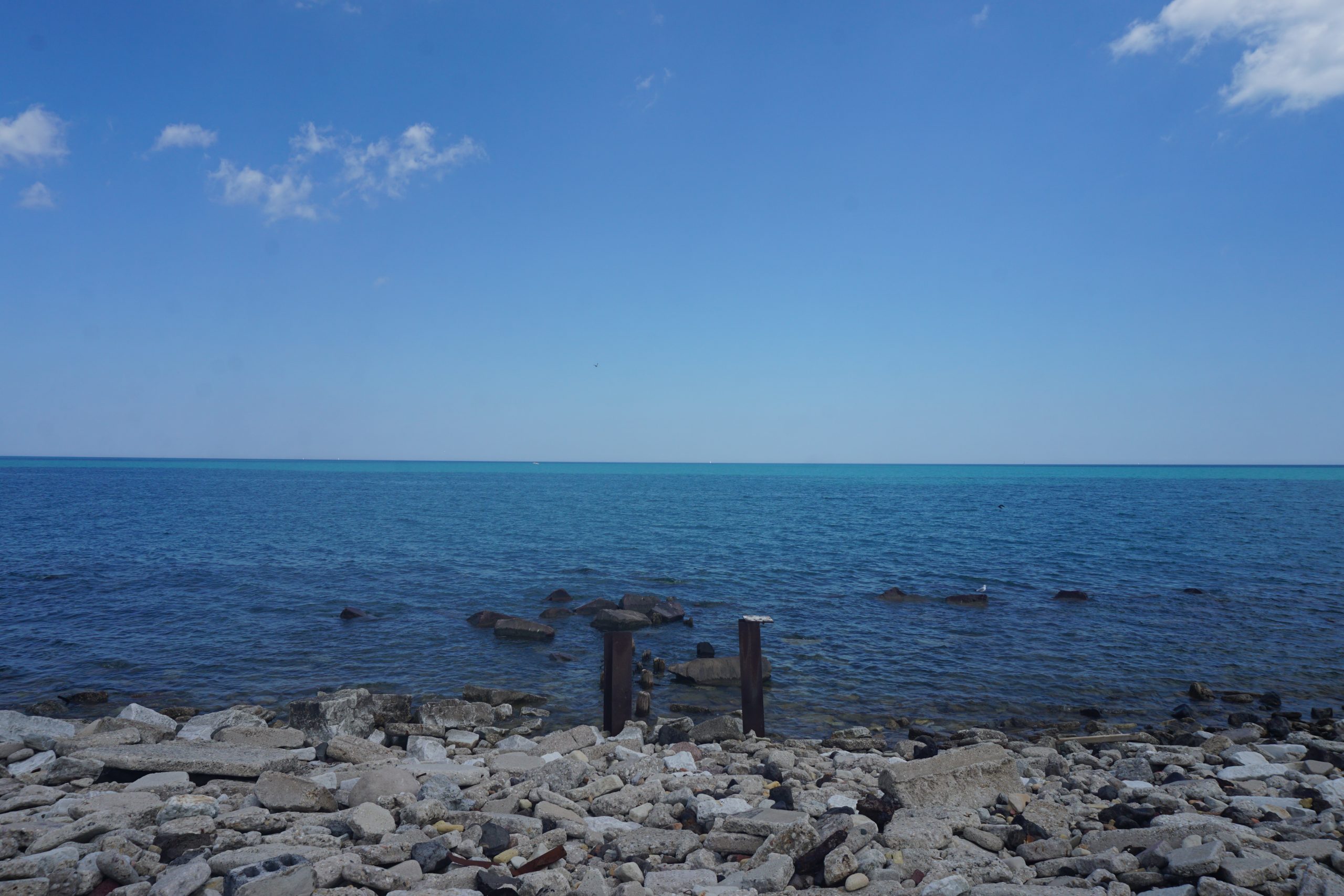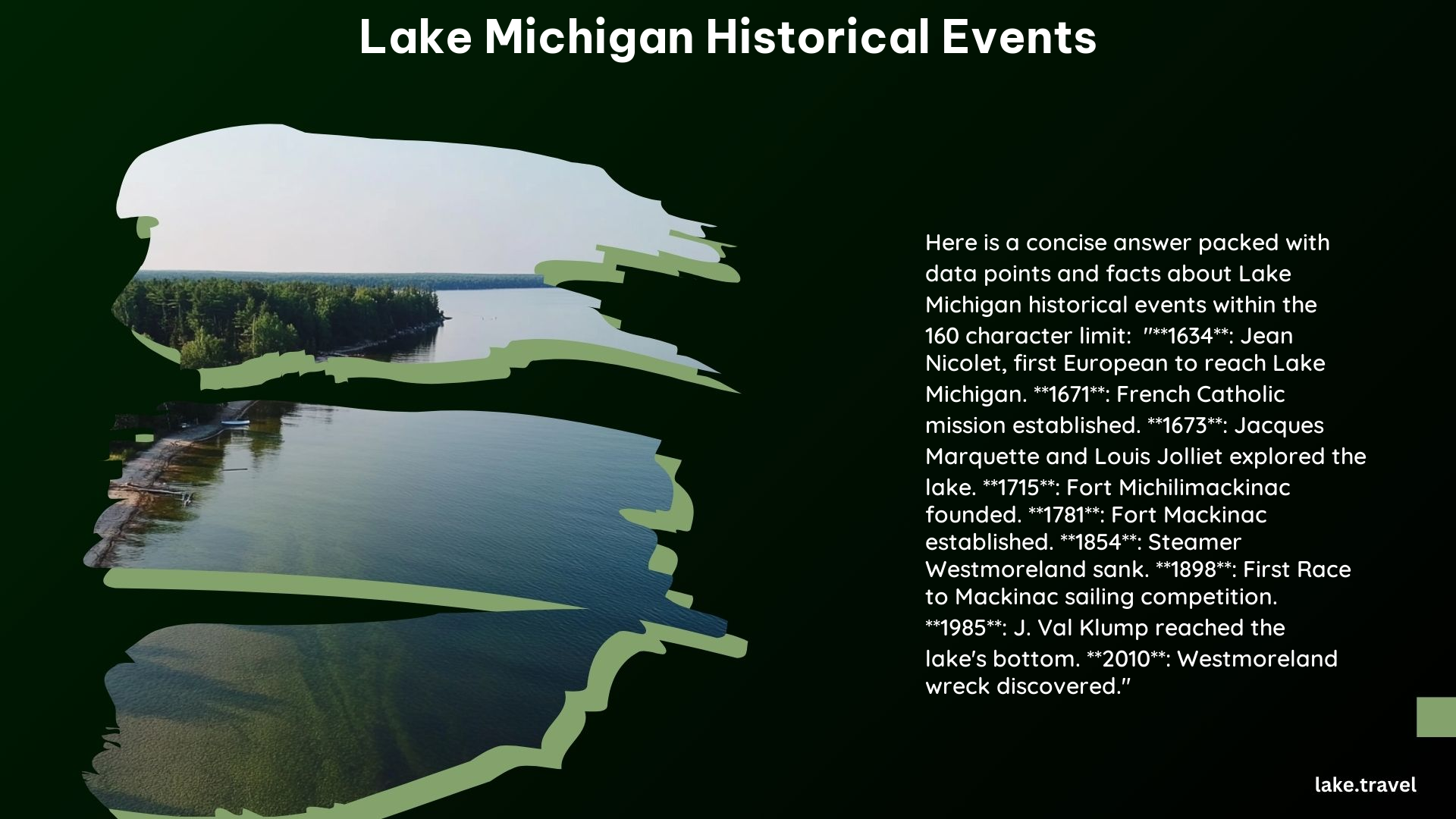Lake Michigan has a rich history that spans over 1.2 billion years, from its formation to its significance in maritime history and the discovery of underwater structures. This blog post will explore the key historical events and facts about this iconic Great Lake.
Formation and Early History

Formation: Lake Michigan began forming about 1.2 billion years ago when two tectonic plates were ripped apart, creating the Mid-Continent Rift. The basin was later filled with water from melting glaciers around 10,000 years ago.
Early Human Inhabitants: The region was inhabited by various Native American tribes, including the Hopewell, Late Woodland, Chippewa, Menominee, Sauk, Fox, Winnebago, Miami, Ottawa, and Potawatomi peoples. These tribes played a significant role in the lake’s early history, using it for trade and travel.
European Exploration and Settlement

Discovery: French explorer Jean Nicolet is believed to have been the first European to reach Lake Michigan, possibly in 1634 or 1638. He was searching for the Northwest Passage but instead discovered the lake.
Naming: The lake was initially named “Lake of the Stinking Water” or “Lake of the Puants” after the people who occupied its shores. Later, it was named “Lac des Illinois” and eventually “Lake Michigan,” derived from the Ojibwa word “mishigami,” meaning “large lake”.
French and British Influence: The French established trading posts and missions around the lake, including Fort Michilimackinac. The British later took control of the area and used it as a military base and fur trade center.
Maritime History and Shipwrecks
Straits of Mackinac: The Straits of Mackinac, connecting Lake Michigan to Lake Huron, were a critical route for Native American travel and fur trade. The straits were also a treacherous area for ships, leading to the creation of the Straits of Mackinac Underwater Preserve, which contains 12 marked shipwrecks.
Shipwrecks: Notable shipwrecks include the Westmoreland, which sank in 1854 and was discovered in 2010, and the Sandusky, Maitland, and Eber Ward, which are part of the underwater preserve.
Modern Era and Tourism
Development of Chicago: Lake Michigan played a crucial role in the development of Chicago, with 90% of the grain shipped from the city traveling over the lake during the antebellum years.
Tourism and Recreation: Today, Lake Michigan is a popular destination for tourists, offering activities like boating, fishing, and swimming. The lake’s shoreline features numerous state and national parks, beaches, and resorts.
Underwater Discoveries
Underwater North American Stonehenge: In 2007, a submerged stone structure resembling Stonehenge was discovered in Lake Michigan. The structure, consisting of 40 stones, is believed to be around 9,000 years old and may have been built by early Native Americans.
These historical events highlight the significance of Lake Michigan in the region’s development, its importance in maritime history, and the fascinating discoveries that continue to be made beneath its surface.
References:
– https://www.livescience.com/32011-lake-michigan.html
– https://en.wikipedia.org/wiki/Lake_Michigan
– https://lovemyhaven.com/travel-tips/history/
– http://www.swmidirectory.org/History_of_Lake_Michigan.php
– https://draperandkramer.com/news-and-insights/the-history-of-lake-michigan/
– https://www.livescience.com/32011-lake-michigan.html (Underwater North American Stonehenge)
